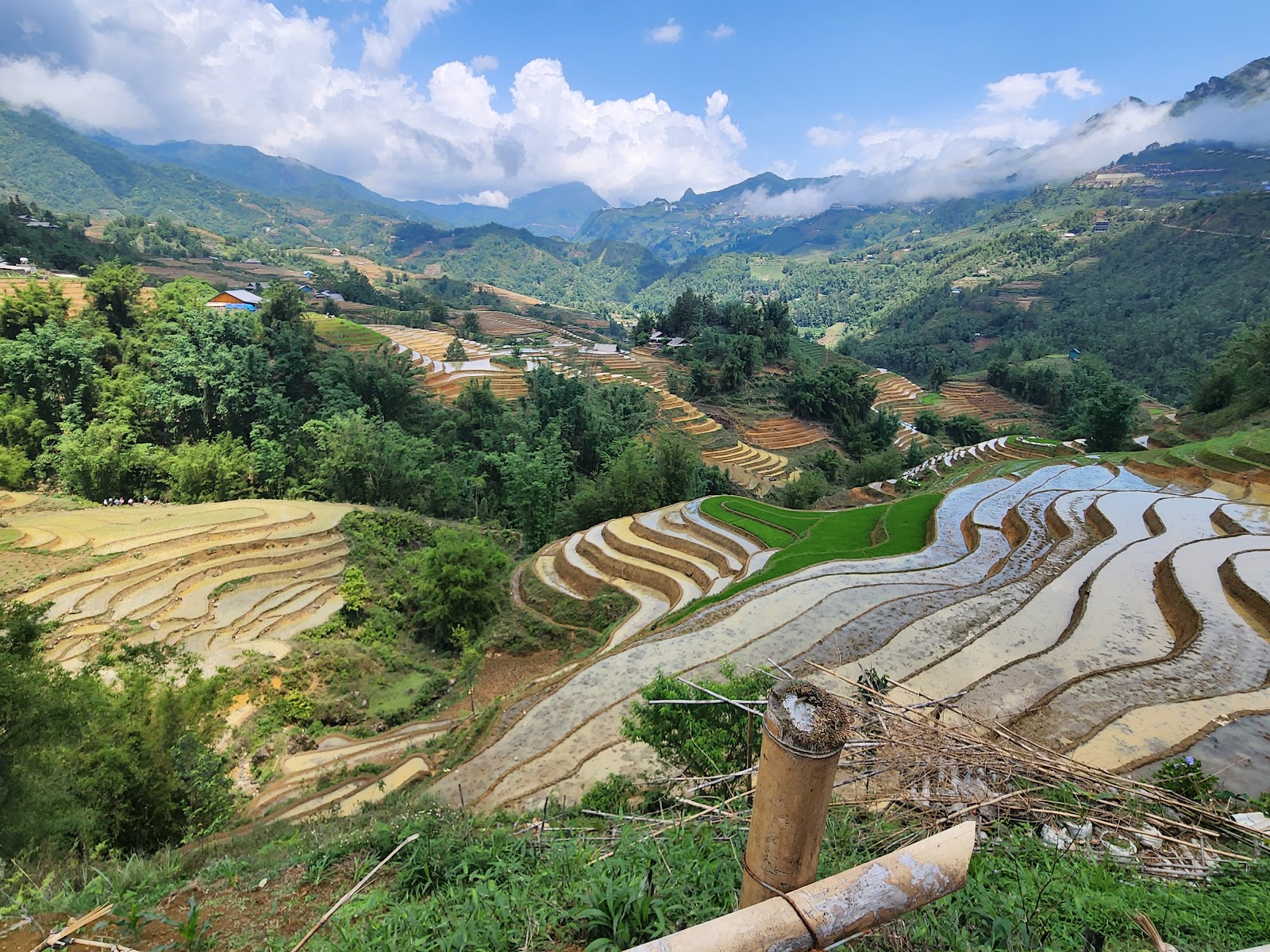This morning, we woke up to the most breathtaking view of the mountains up in Sapa. Sapa is in the far northern part of Vietnam, just one mile away from China, and is 1500m above sea-level. Unlike the Rocky Mountains, to which most of us are familiar with, the mountains surrounding Sapa are filled with greenery and lack snow caps. These mountains are also famous for their terraced rice fields. Students were able to enjoy the beautiful scenery while eating breakfast and mentally preparing for the 5-mile hike ahead. One student with a bad knee couldn’t join us on the hike, but luckily Karen stayed with her, and they had a hoot exploring the city of Sapa. They enjoyed the various shops around the city and even tried out some of the local drinks and goods.
As for the rest of us, today’s adventure was one of those, “You just had to be there,” experiences. After breakfast, we all loaded up into a bus and van where we were taken just outside of Sapa. Upon arriving at our destination, we were greeted by the local Hmong villagers, eagerly waiting to sell us their handmade goods. After snapping a few pictures at the top of the mountain, we began our descent with the villager women “escorting” us. The walk down the mountain was no easy task, but the views were amazing. It was steep and slick in spots with motorbikes zooming past us. Luckily, the Hmong women were there to help guide us. They offered to hold our hands and give support when the trail got a little sketchy. They even made small talk with each of us, asking our name or where we come from before handing us a plant bent into the shape of a heart or a horse. We finally reached our destination after walking a little over a mile.
On the walk down, we passed many terraced rice fields, but our destination led us to one at the bottom. Here, we took off our socks and shoes and got right into the rice field. The water went up to our mid-shins and was very mucky. Each of us grabbed a bundle of rice and planted a few rows of rice with the farmers. It was truly an experience none of us will ever forget!
Throughout the entire hike, both down and up, it seemed that
every corner held the most perfect photo opportunity. The views we experienced
today were something out of a painting, and we stopped every chance we could to
capture it. However, the pictures taken today will never do it justice. Like
stated previously, you just had to be there. There’s a saying that goes
something like, “It didn’t happen unless there’s proof,” and man, do we have a
lot of proof! Whether it was planting the rice or the breathtaking scenery,
these photos hold memories that will be cherished forever.
Our hike today was about 5 miles and didn’t end where it started.
This was a relief since the walk down was way steeper than the walk to a
village, which was our final destination. We were picked up by the bus and van and
were then taken to lunch at a local restaurant in Sapa. Most of us had built
quite an appetite from the hike, so we waited (im)patiently for the food. Once
the food arrived, we all eagerly ate until we were full, and it was delicious!
After lunch, we loaded back onto the bus and headed to
Hanoi. At the beginning of the ride, Tony, our tour guide, told us a little bit
about the history of Sapa and the people that live there. Sapa started to become
popular in the 1950s when it was set up as a vacation spot for French officers
due to the more comfortable temperatures. Today tourism is a really big part of
Sapa especially because of the many beautiful farming terraces. The rice that
is planted in these terraces is not only used for personal use but also
production agriculture. The rice is sold in Hanoi because it is a high quality
rice. Each crop takes about four months to grow meaning only one crop of rice
is grown in a single year due to dropping temperatures later in the year. In
winter months it gets to be pretty cold, even to the point where they may get
snow once or twice. However, in the months that rice is not being produced,
pumpkins and sweet potatoes are grown.
We also talked about the Hmong people that lived in Sapa and
the villages just outside. The Hmong people have extremely good pronunciation
of words. We all noticed this as we walked down the trail and had conversations
with them easily. The reason behind this is because they had migrated down from
an area of China that had European influence at one time. We had also talked to
a tour guide from another group and she was telling us that there are different
groups of Hmong people and the way in which they can be distinguished is by the
color of head scarves or clothing they wear. The Black Hmongs wore Items that
were black while the Red Hmongs wore red. She happened to be a Red Hmong while
the women walking down the mountain with us were Black Hmong.
The rest of the 5-hour ride back to Hanoi was mostly quiet
because everyone was wiped out from the long hike. Once we got back, we stopped
at a restaurant for supper. Although it was all pretty good, many of us stated
that we could really go for a burger and fries soon. We finished eating and
made our way back to the hotel for a good nights sleep.










No comments:
Post a Comment